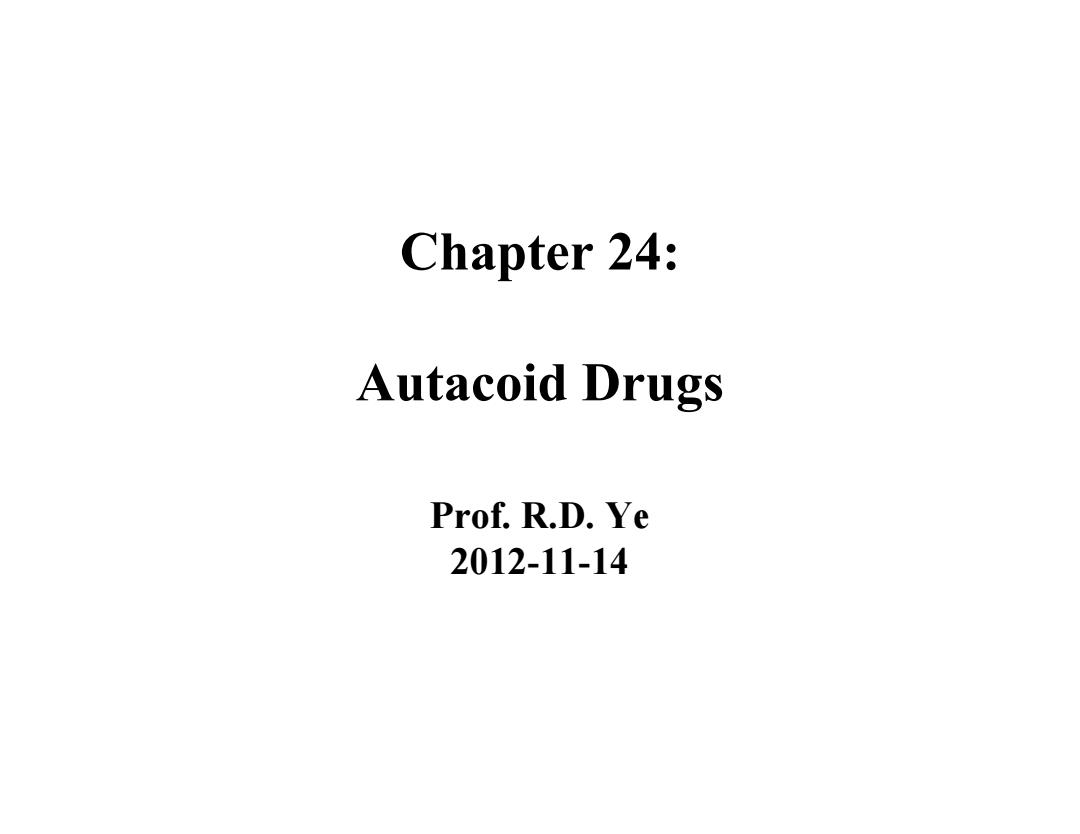
Chapter 24: Autacoid drugs Prof.R.D.Ye 2012-11-14
Chapter 24: Autacoid Drugs Prof. R.D. Ye 2012-11-14
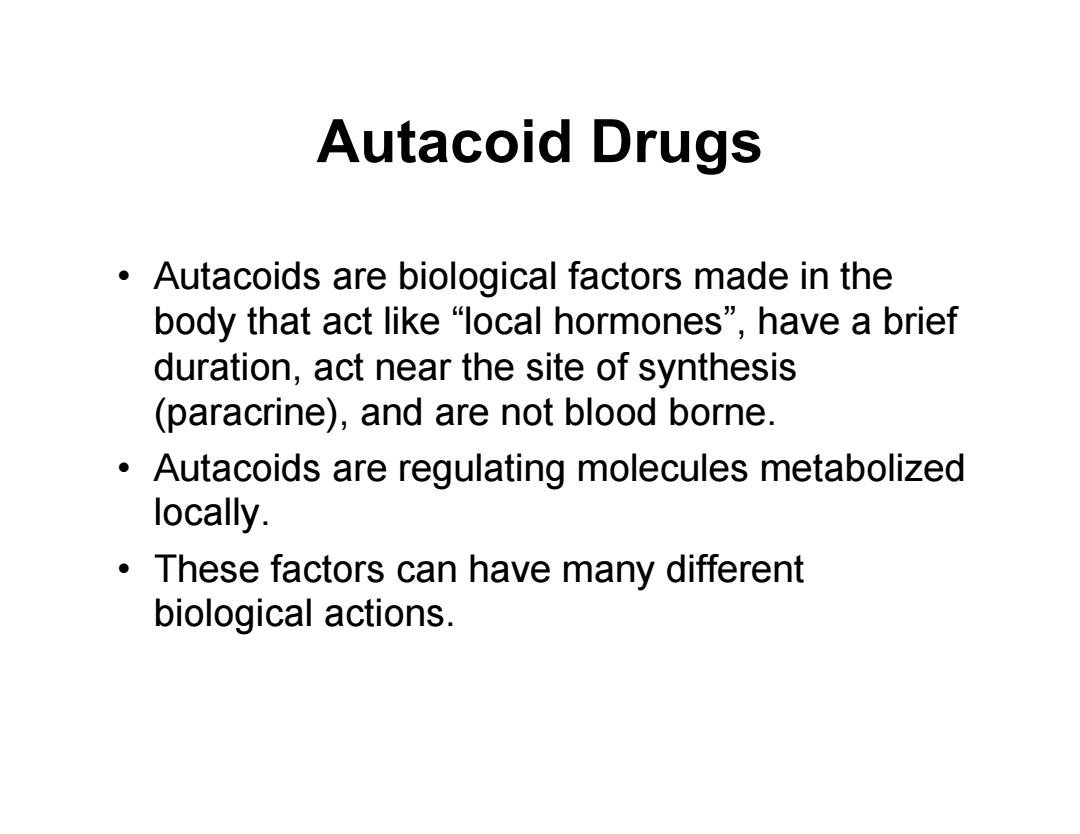
Autacoid Drugs Autacoids are biological factors made in the body that act like "local hormones",have a brief duration,act near the site of synthesis (paracrine),and are not blood borne. Autacoids are regulating molecules metabolized locally. These factors can have many different biological actions
Autacoid Drugs • Autacoids are biological factors made in the body that act like “local hormones”, have a brief duration, act near the site of synthesis (paracrine), and are not blood borne. • Autacoids are regulating molecules metabolized locally. • These factors can have many different biological actions
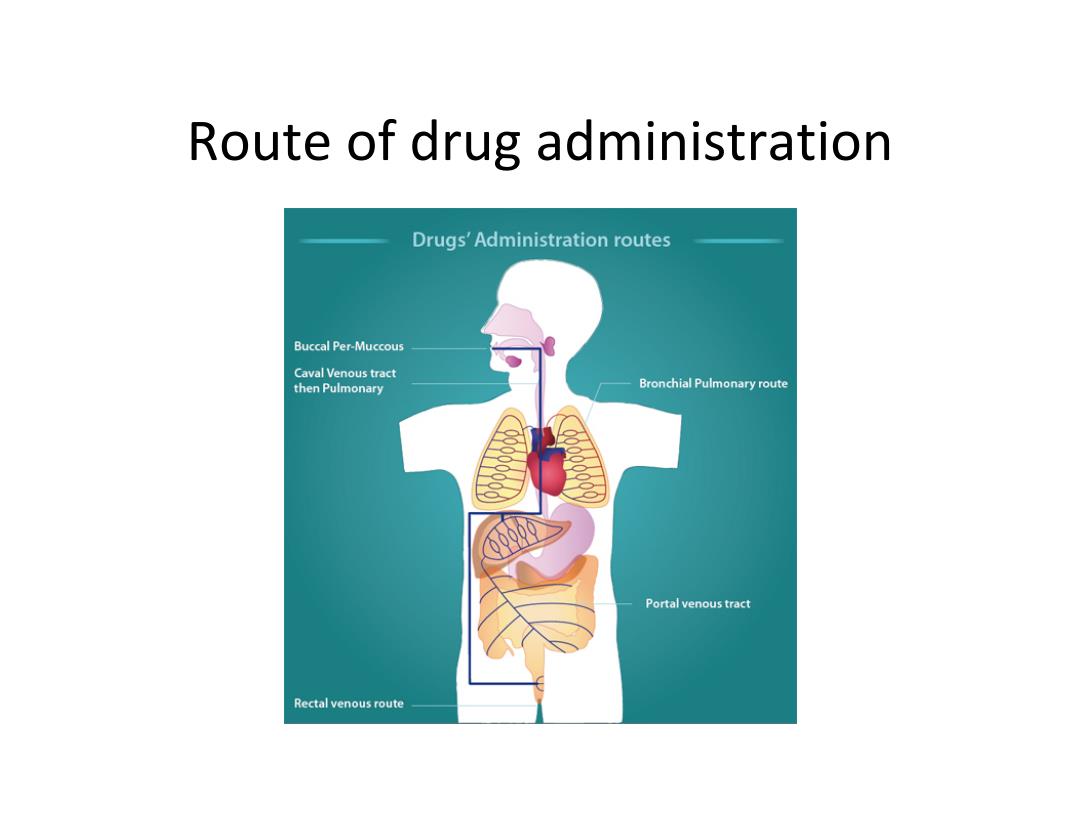
Route of drug administration Drugs'Administration routes Buccal Per-Muccous Caval Venous tract then Pulmonary Bronchial Pulmonary route Portal venous tract Rectal venous route
Route of drug administration

Paracrine (left)and autocrine(right) (B)PARACRINE signaling cell target ● cells local mediator IN A GROUP OF IDENTICAL SIGNALING CELLS,EACH CELL RECEIVES A STRONG AUTOCRINE SIGNAL
Paracrine (left) and autocrine (right)
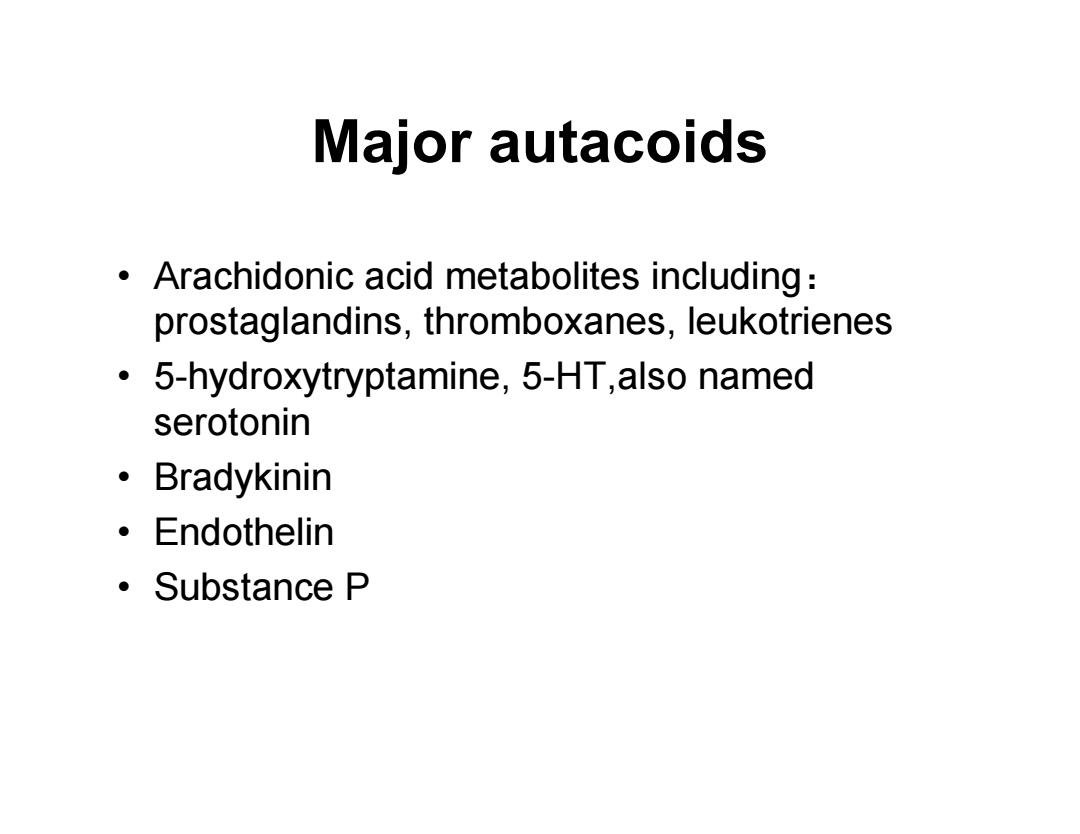
Major autacoids Arachidonic acid metabolites including: prostaglandins,thromboxanes,leukotrienes 5-hydroxytryptamine,5-HT,also named serotonin ·Bradykinin ·Endothelin ·Substance P
Major autacoids • Arachidonic acid metabolites including: prostaglandins, thromboxanes, leukotrienes • 5-hydroxytryptamine, 5-HT,also named serotonin • Bradykinin • Endothelin • Substance P
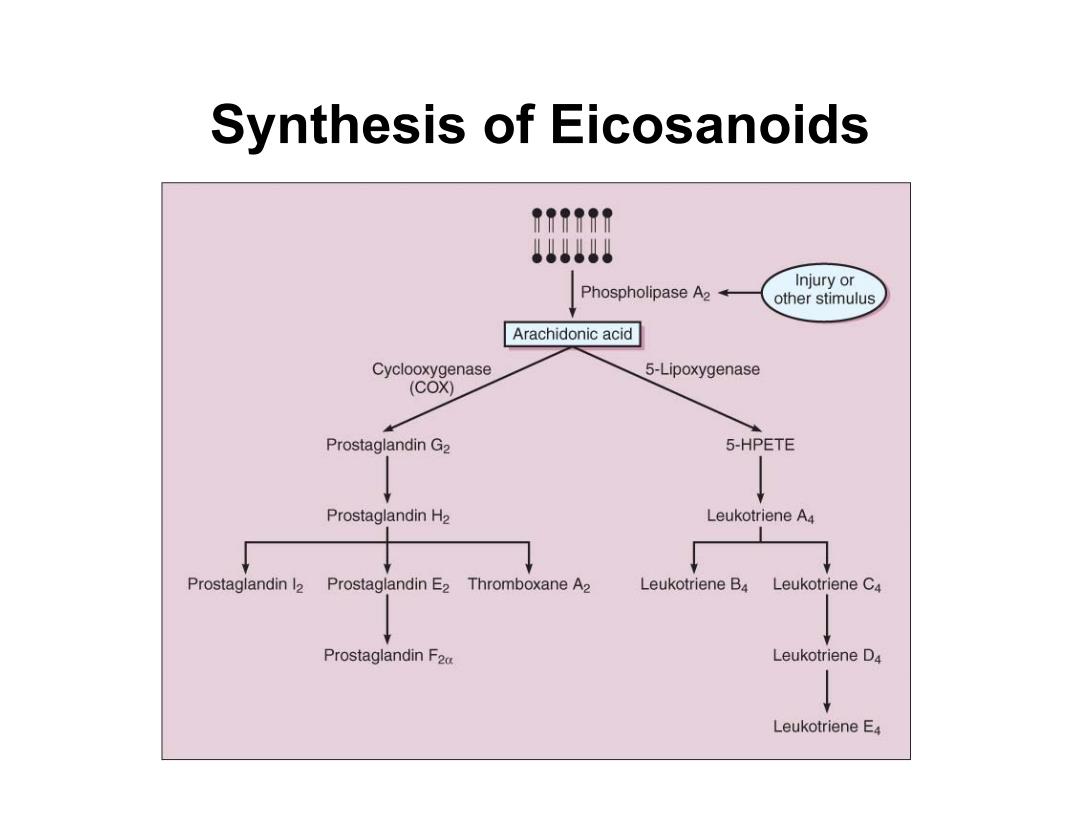
Synthesis of Eicosanoids 777979 Injury or Phospholipase A2 other stimulus Arachidonic acid Cyclooxygenase 5-Lipoxygenase (COX) Prostaglandin G2 5-HPETE Prostaglandin H2 Leukotriene A4 Prostaglandin 12 Prostaglandin E2 Thromboxane A2 Leukotriene B4 Leukotriene C4 Prostaglandin F2c Leukotriene D4 Leukotriene E4
Synthesis of Eicosanoids
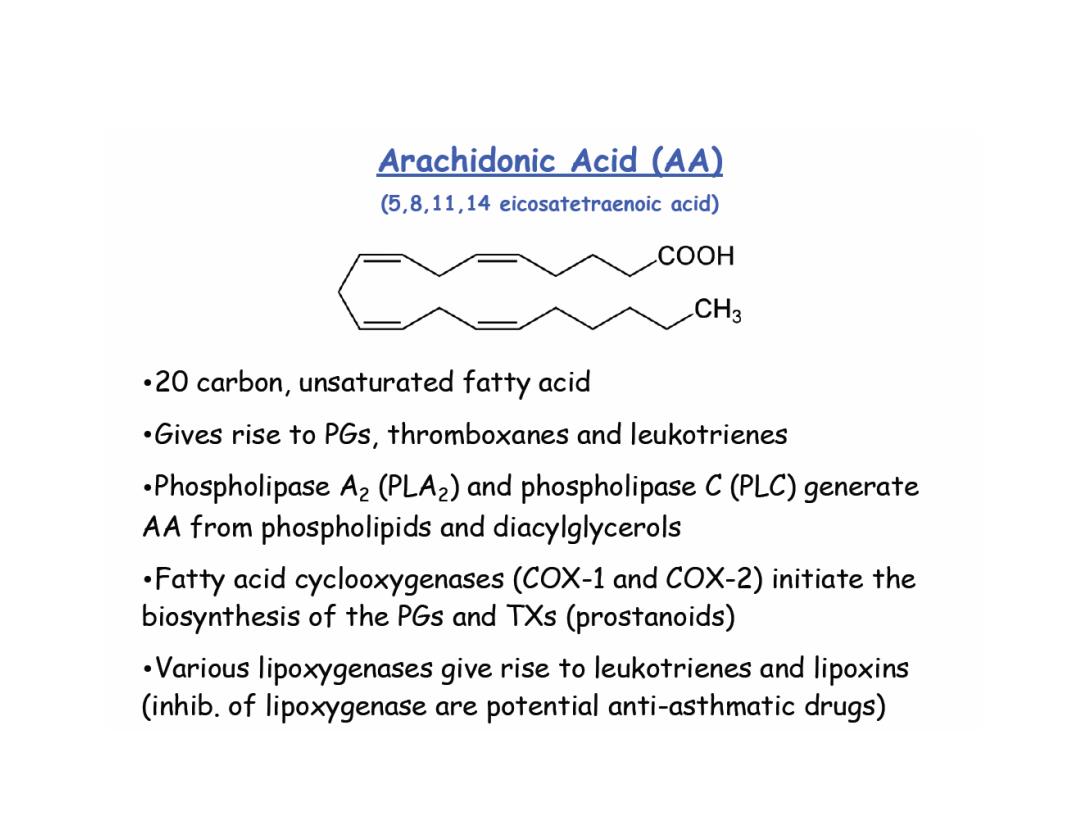
Arachidonic Acid (AA) (⑤,8,11,14 eicosatetraenoic acid) COOH CH3 .20 carbon,unsaturated fatty acid .Gives rise to PGs,thromboxanes and leukotrienes .Phospholipase A2(PLA2)and phospholipase C(PLC)generate AA from phospholipids and diacylglycerols .Fatty acid cyclooxygenases(COX-1 and COX-2)initiate the biosynthesis of the PGs and TXs(prostanoids) Various lipoxygenases give rise to leukotrienes and lipoxins (inhib.of lipoxygenase are potential anti-asthmatic drugs)
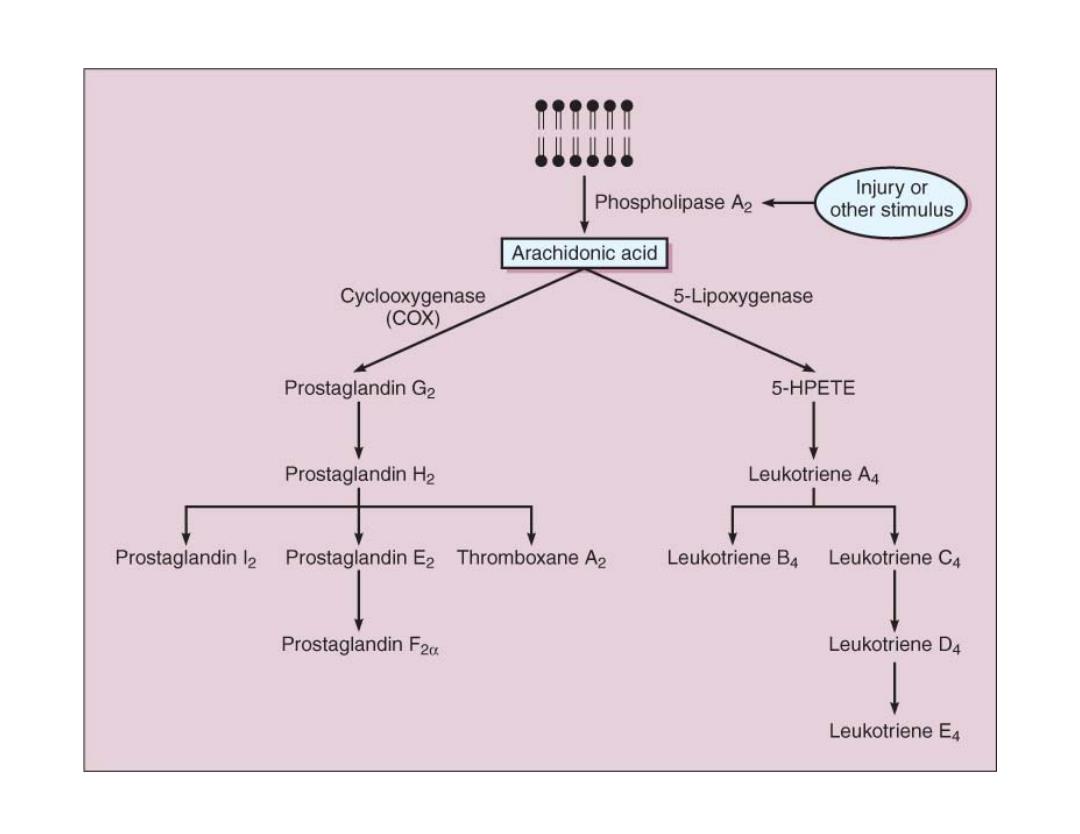
777799 44 Phospholipase A2 Injury or other stimulus Arachidonic acid Cyclooxygenase 5-Lipoxygenase (COX) Prostaglandin G2 5-HPETE Prostaglandin H2 Leukotriene A4 Prostaglandin 12 Prostaglandin E2 Thromboxane A2 Leukotriene B4 Leukotriene C4 Prostaglandin F2c Leukotriene D4 Leukotriene E4

Beraprost Beraprost is a synthetic analogue of prostacyclin,under clinical trials for the treatment of pulmonary hypertension.It is also being studied for use in avoiding reperfusion injury. As an analogue of prostacyclin PG12,beraprost effects vasodilation,which in turn lowers the blood pressure.Beraprost also inhibits platelet aggregation,though the role this phenomenon may play in relation to pulmonary hypertension has yet to be determined
Beraprost As an analogue of prostacyclin PGI2, beraprost effects vasodilation, which in turn lowers the blood pressure. Beraprost also inhibits platelet aggregation, though the role this phenomenon may play in relation to pulmonary hypertension has yet to be determined. Beraprost is a synthetic analogue of prostacyclin, under clinical trials for the treatment of pulmonary hypertension. It is also being studied for use in avoiding reperfusion injury
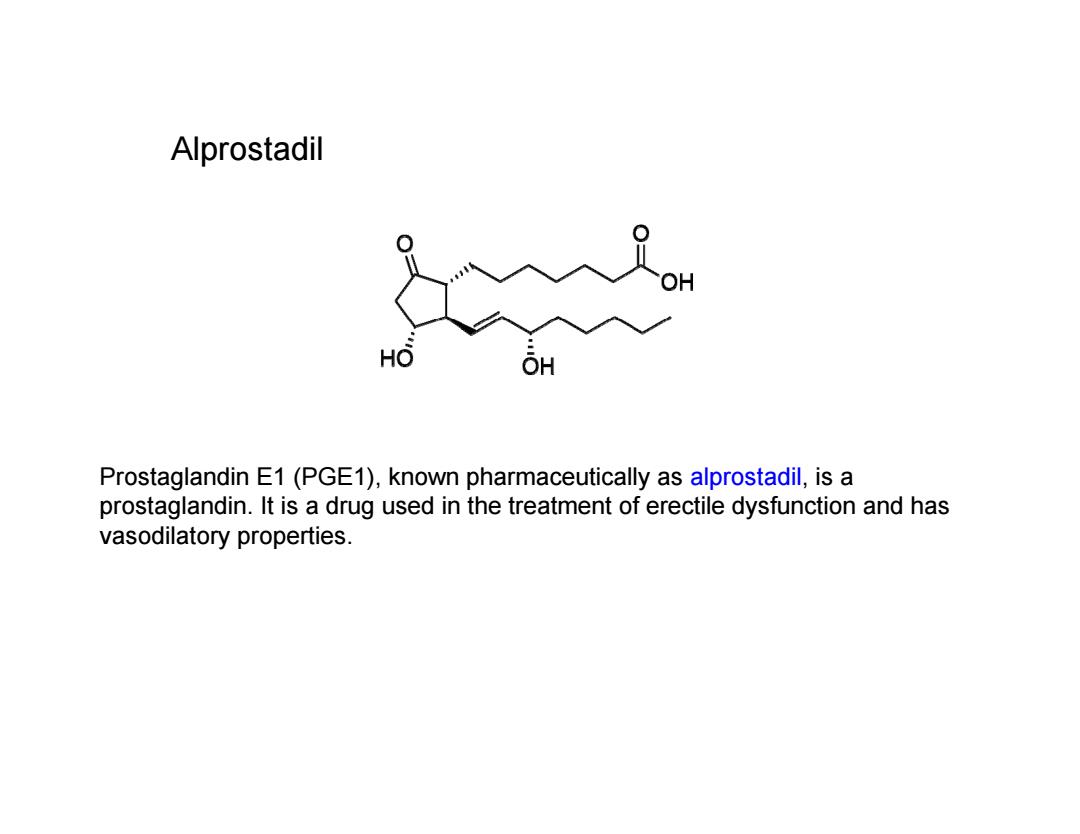
Alprostadil oh HO H Prostaglandin E1(PGE1),known pharmaceutically as alprostadil,is a prostaglandin.It is a drug used in the treatment of erectile dysfunction and has vasodilatory properties
Alprostadil Prostaglandin E1 (PGE1), known pharmaceutically as alprostadil, is a prostaglandin. It is a drug used in the treatment of erectile dysfunction and has vasodilatory properties